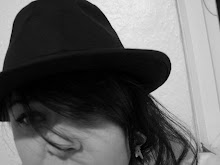The movement is explained better in the video below, which also has two examples: Richard Leacock's Jazz Dance (1954) filmed in a dance bar in New York and Robert Drew's "Primary" (1960) about a young politician getting ready for an official photograph and then doing a speech. It was shot in the same way, very close to the subject without any explanations, only recording was was there.
We also watched the first part of the film Five Obstructions (2003) which shows a film maker having to re-make his film "The perfect human" five times, each time having some obstructions. One of the limits in his first obstruction was not to use more than 12 frames. I really liked the way he used this limit; it made the film very dynamic and catchy.
So after all this, we have a task: To make a direct cinema film, and stay in the guidelines of this genre.
Stick with the rules below for your 2min piece.
1.Shooting hand held no tripods
2.No lights
3.No questions
4.Never ask anyone to do anything
5.Shoot and shoot and shoot
6.Don’t produce a film lecture
7.Forget word logic and try to find a visual dramatic logic
8.Capture the sound at same time as visuals, don’t mess with the sound.
I wanted to try an make something similar to Leacock, because I loved the feel the video had, it was just honest and straightforward. So I went to a club and started filming. I have probably about 30 min of footage, so i should be able to get 2 minutes of good footage. I will start the edit this week and will upload it asap.

No comments:
Post a Comment